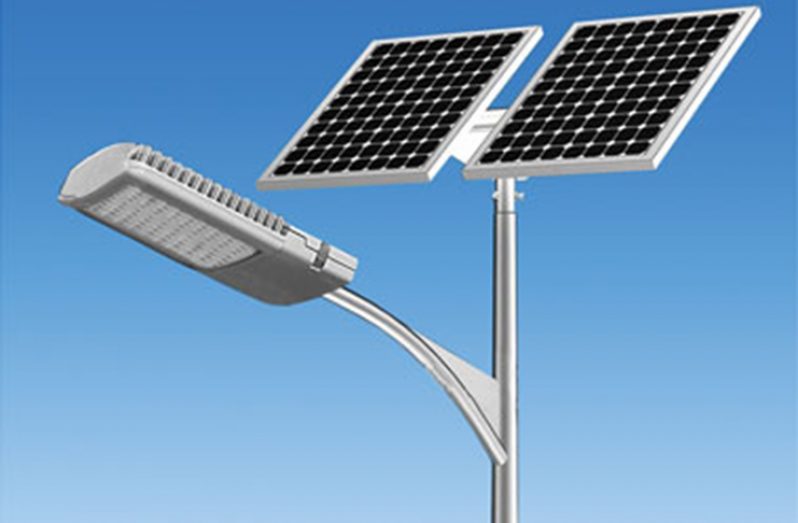–saving gov’t some $114M in costs annually
THE government has plans to annually save some $114M in energy costs, while boosting local capacity in solar energy with its focus on cleaner, safer and more efficient energy options.
The main objective of the plan is to further propel the country into an energy-efficient and ‘green’ future, by relying primarily on renewable energy to meet its needs.
The presentation of Budget 2019 last Monday outlined that 400 stand-alone solar- powered streetlamps will be installed across the country in the coming year, while some 80 government buildings will be outfitted with solar photovoltaic (PV) panels.
It also revealed that in 2018 alone, over 10,000 LED lights, 1,000 motion sensors, as well as PV panels were installed countrywide; this represents some 1,942 kW of additional solar energy capacity.
According to Finance Minister Winston Jordan, the stand-alone, solar- powered streetlamps, once installed, will replace the previously common 250W high-pressure sodium vapour (HPSV) lamps and 175W mercury vapour lamps across the country, thereby saving the government millions of dollars in the process.
Features of this type of streetlamp include: harnessing the sun’s energy by converting it into electricity; storing this energy throughout the day; less maintenance and no external wires, therefore minimising the risk of accidents.
The LED lights, meanwhile, are water-resistant; burn less energy; operate on very low voltages; work well in a wide range of operating temperatures; are environmentally safe; improve highway visuals; and help discourage criminal activities.
Minister Jordan told the House that by the first quarter of next year, the Hosororo Hydropower Project and the Mabaruma PV Farm will be ready to be commissioned.
The Hosororo project, he revealed, will entail the construction of a 20kW run-of-the-river-type micro-hydropower plant; it will also ensure that the community and nearby villages receive electricity for additional hours.
“Feasibility studies,” he said, “have been completed for the installation of solar PV farms in the townships of Bartica, Lethem and Mahdia.”
Addressing the United Nations (UN) Summit on Sustainable Development in New York in 2015, President David Granger reaffirmed Guyana’s commitment to the 2030 Agenda for Sustainable Development.
Goal seven of the UN’s 17 Sustainable Development Goals (SDGs) deals with the accessibility to affordable, reliable, sustainable, clean and modern energy for all by 2030; and Guyana is aiming to achieve this.
As such, areas where there were not enough street lights for years will become the key focus of the government in the new year, through projects such as the $750M Adequate Housing and Urban Accessibility Programme.
Under the programme, apart from the construction of core houses for single-family households and families living in uninhabitable homes, communities such as Sophia will receive ample street lights among other communal facilities.
An additional $780M has been allocated for consolidation efforts across the rest of the country, and will include the procurement and installation of 100 LED street lamps.




.jpg)









